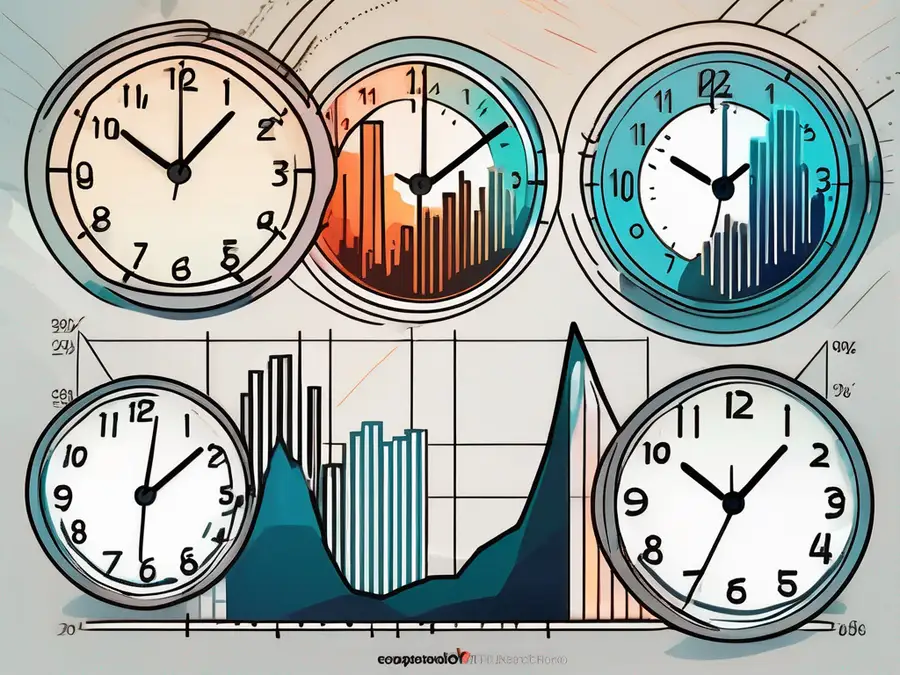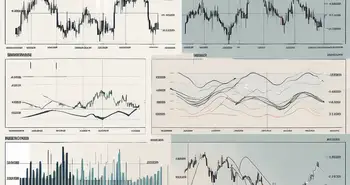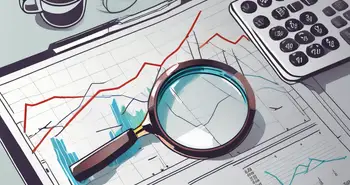Quadruple Witching: The Market Chaos Behind This High-Stakes Trading Day

As an experienced investor, I've navigated through various market phenomena, with Quadruple Witching being one of the more intriguing events. This particular day can evoke both excitement and anxiety within the financial markets, but with a solid understanding, it can offer lucrative opportunities. In this article, I will delve into the concept of Quadruple Witching, its implications in the marketplace, and share strategic insights to help you navigate this potentially volatile period.
What is Quadruple Witching?
Quadruple Witching refers to the simultaneous expiration of four different types of financial contracts on the same day. This usually occurs on the third Friday of March, June, September, and December.
The ‘witching' part of the term derives from the short-term volatile movements that often accompany these expirations, reminiscent of fantasy tales where witches create chaos. In reality, the term signifies a time when market participants must manage multiple expirations, leading to sharp price movements.
On Quadruple Witching days, traders often speculate on price swings in stock and options, leading to increased market volatility. The anticipation surrounding these expirations can drive market behavior, as both institutional and retail investors adjust their positions. The heightened activity can result in unusual trading volumes, as market participants rush to close out or roll over their positions, creating a perfect storm for price fluctuations. This phenomenon is particularly evident in heavily traded stocks and indices, where the interplay of options and futures can lead to dramatic shifts in market sentiment.
When Are the 2024 Quad Witching Days?
Quadruple witching occurs on the third Friday of March, June, September, and December, aligning with the end of each financial quarter. In 2024, the quad witching days will fall on:
- March 15
- June 21
- September 20
- December 20
These dates mark significant trading activity as stock index futures, stock index options, single stock futures, and stock options all expire simultaneously.
The Origins of Quadruple Witching
The origin of Quadruple Witching can be traced back to the introduction of various derivative instruments. As options and futures became popular among investors during the 1970s and 1980s, it became necessary to account for their expiration dates. The concept of simultaneously expiring four types of contracts arose as a way to streamline trading and provide opportunities for hedging and speculation.
Consequently, the term ‘quadruple witching' solidified in the financial vernacular, representing both a significant trading day and a point of concern for market stability. These days have been studied and analyzed over the decades, revealing trends that can inform trading strategies. Analysts often observe that the volatility on these days can create both risks and opportunities, prompting traders to develop specialized strategies tailored to capitalize on the unique market dynamics. Furthermore, the phenomenon has led to the creation of various financial products designed to mitigate risks associated with these expirations, showcasing the evolving nature of financial markets and the continuous adaptation of traders to the complexities of modern investing.
The Role of Quadruple Witching in the Financial Market
Impact on Stock Market Volatility
Investors, including myself, have witnessed firsthand how Quadruple Witching injects volatility into the markets. As options and futures contracts reach their expiration, they can lead to dramatic price movements, as traders either close positions or roll them over to future dates. This selling pressure can result in sudden shifts in stock prices, creating both risk and opportunity.
For example, I remember a particular Quadruple Witching day where the S&P 500 experienced a dramatic drop in the early hours, only to rebound sharply by the market close. Traders who anticipated these price swings made significant gains by strategically positioning themselves ahead of time.
Influence on Trading Volume
On Quadruple Witching days, the trading volume tends to surge. Stock exchanges often report record volumes, as market participants rush to adjust their positions. This influx of trading activity can lead to wider bid-ask spreads and increased slippage, which can affect orders placed around this time.
In my experience, it’s crucial for traders to be cognizant of the heightened activity and prepare accordingly. Entering trades with limit orders rather than market orders can help navigate the chaos of high volume and protect against unfavorable fills.
The Four Expirations of Quadruple Witching
Stock Index Futures
Stock index futures are one of the primary contracts affected during Quadruple Witching. These futures contracts allow traders to speculate on the future value of stock indices like the S&P 500 or NASDAQ 100. As they approach their expiration, the settlement price can influence the performance of the underlying stocks.
Stock Index Options
Along with futures, stock index options also expire on these unique days. These options give investors the right, but not the obligation, to buy or sell an index at a predetermined price. The fluctuations in these contracts can shape market sentiment as investors position themselves to capitalize on forecasts.
Stock Options
Individual stock options also contribute to the Quadruple Witching experience. With options tied to specific stocks, the expiration can spur buying or selling pressure on underlying shares. This can lead to significant movement, particularly in stocks that are widely held or viewed as “optionable.”
Single Stock Futures
Lastly, single stock futures allow investors to gain exposure to individual stocks through futures contracts. Their expiration on Quadruple Witching adds an additional layer of complexity, as the demand for closing or rolling futures can impact stock prices directly. Understanding these nuances is pivotal for any serious trader.
The Timing of Quadruple Witching
Quadruple Witching Days in a Year
Quadruple Witching occurs four times a year, aligning with the quarterly expiration cycle of the contracts mentioned earlier. Mark these dates on your calendar: the third Friday of March, June, September, and December. Each of these days carries its own significance and trading patterns that a seasoned investor must recognize.
Trading Hours for Quadruple Witching
The trading hours during Quadruple Witching remain the same: the market opens at 9:30 AM and closes at 4:00 PM (Eastern Time). However, the chaos often peaks in the final hour of trading, known as the “witching hour,” as traders execute last-minute order adjustments. During this period, I urge traders to exercise caution and to have a well-thought-out plan in place to minimize risk.
Strategies for Navigating Quadruple Witching
Risk Management During Quadruple Witching
Effective risk management is paramount during Quadruple Witching. With the market prone to sharp moves, setting stop-loss orders can protect against outsized losses. Moreover, diversifying positions can help mitigate the overall risk of an investor's portfolio.
In my practice, I allocate smaller portions of my capital during these volatile days and monitor the positions closely. Limiting exposure allows for greater flexibility, particularly in fast-moving markets.
Opportunities for Investors
Although Quadruple Witching can be intimidating, it also presents unique opportunities for investors who can navigate the associated volatility. Traders can look for patterns that tend to emerge during these expirations, such as short squeezes or rallies in heavily shorted stocks.
Personally, I have capitalized on these opportunities by identifying stocks that are expected to have a high level of options activity and positioning myself accordingly. By combining technical analysis with an understanding of market psychology, I have managed to profit from the elevated volatility.
Frequently Asked Questions
- What is Quadruple Witching?
Quadruple Witching refers to the simultaneous expiration of stock index futures, stock index options, stock options, and single stock futures, which occurs four times a year.
- How does Quadruple Witching affect stock market volatility?
It often increases volatility due to mass buying and selling as traders adjust their positions, potentially leading to sharp price movements.
- Why is trading volume higher on Quadruple Witching days?
The increased activity stems from the simultaneous expiration of multiple contracts, prompting traders to enter and exit positions in large volumes.
- How should I prepare for Quadruple Witching?
Consider adjusting your trading strategy by employing risk management techniques, maintaining a diversified investing approach, and staying informed on upcoming expirations.
In conclusion, understanding Quadruple Witching can be a significant advantage for investors looking to thrive in a tumultuous market. With the right strategies and insights, you can turn potential volatility into profitable opportunities.
Ready to take on the market during Quadruple Witching and beyond? Discover Morpher.com, the revolutionary trading platform that leverages blockchain technology to offer zero fees, infinite liquidity, and a unique trading experience. With Morpher, you can trade a variety of asset classes, engage in fractional investing, and even short sell without interest fees. Embrace the power of up to 10x leverage and enjoy the safety of a non-custodial wallet. Sign up now to transform your investing game and receive your free sign-up bonus. Sign Up and Get Your Free Sign Up Bonus.

Disclaimer: All investments involve risk, and the past performance of a security, industry, sector, market, financial product, trading strategy, or individual’s trading does not guarantee future results or returns. Investors are fully responsible for any investment decisions they make. Such decisions should be based solely on an evaluation of their financial circumstances, investment objectives, risk tolerance, and liquidity needs. This post does not constitute investment advice.

Painless trading for everyone
Hundreds of markets all in one place - Apple, Bitcoin, Gold, Watches, NFTs, Sneakers and so much more.

Painless trading for everyone
Hundreds of markets all in one place - Apple, Bitcoin, Gold, Watches, NFTs, Sneakers and so much more.









